Rococo style in women's clothing - elegant images of the past. Rococo clothing style.
The Rococo style in the second half of the 18th century became the main style in European art, both in architecture, painting, and fashion. The Rococo style comes after the Baroque, becoming its original continuation, but with its own peculiarities peculiar only to it. Like Baroque, Rococo style is a palace style; fashion is still dictated by Versailles.
The word "rococo" comes from the French "rocaille" - crushed stone, decorative shell, shell. The term “rocaille” itself was originally used to describe the method of decorating grottoes, fountains, gazebos, and terraces with various fossils that imitate natural formations. The Rococo style was most widespread in interior design.
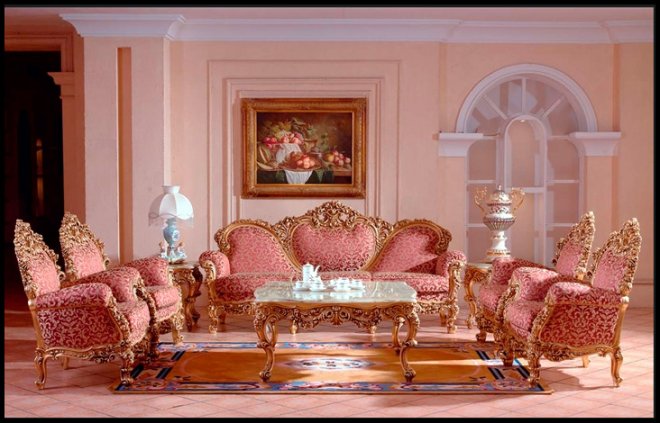
In the 18th century, what we today call Rococo was called “pictorial taste,” but soon Rococo was criticized, it began to be called “twisted” and “tortured,” and even “spoiled taste.”
The first critics of Rococo were encyclopedists and French educators, among whom, for example, were such famous personalities, like Denis Diderot, Voltaire. Encyclopedists criticized Rococo for the lack of a “reasonable principle” in it, because for them the main thing was reason and, of course, the reasonableness and practicality that follows from it in everything.

Baroque and Rococo. – was a lush, somewhat cumbersome style, a style of balls and state halls, a style where everything was “too much.” Rococo will become a cozier, more homely style; it is not without reason that the main area of application of the Rococo style will not be architecture, but interior design.
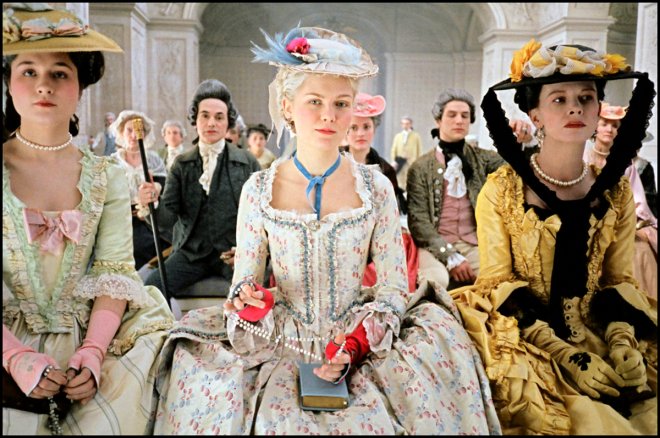
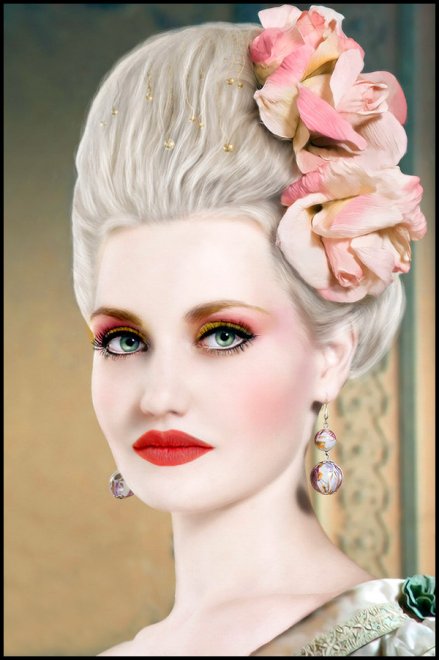
The same is true in fashion; in Baroque times it was fashionable bright colors, and the makeup made all the women older in age; looking at the women of the Baroque era, one could safely say that they were all well over thirty and they were all incredibly important, significant ladies. Rococo, on the contrary, places emphasis on gentle, light, pastel colors- soft blue, pale yellow, pink, gray-blue. And in makeup, all the women look exclusively twenty-year-old, young girls, blush and powder help them with this. However, it becomes so abundant that sometimes even husbands did not recognize their wives in makeup; the face turns into a youthful, but completely lifeless mask.
Perfumery was also valued in the Rococo era, aromas were actively used, perfumes were widespread among women - orris root, neroli, patchouli, rose water.
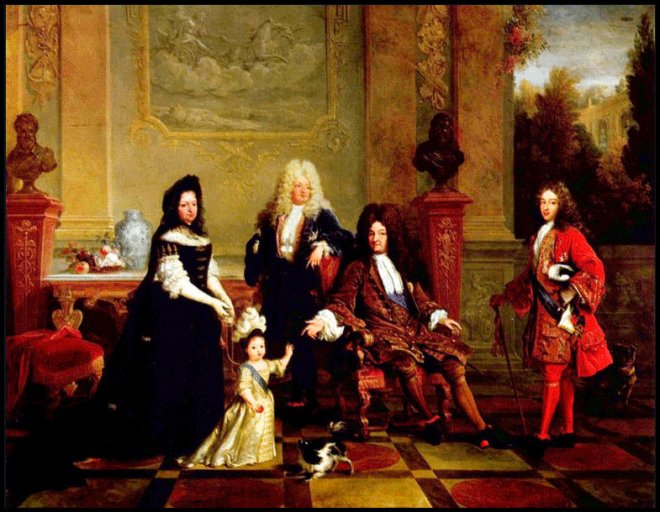
And the Rococo era is rightly called “ woman's age" It is in the Rococo style that the men's suit approaches the women's; men's clothes also follow fashion, like ladies, they also dress up and follow it. And what’s more, men’s fashion is as close as possible to women’s fashion.
Men wear justocor. Justocor is a long men's caftan, which is most often sewn to fit the figure. Justocore first appeared in France in the 60s of the 17th century. In the Rococo era, the floors of the justocore became wider, now they seemed to stick out in different directions.
In the Rococo era, men wore a camisole under the justocore. A camisole is a type of men's clothing, sewn at the waist and knee length, sometimes it was sewn without sleeves; it was often, especially in winter, worn under a caftan. TO 19th century the camisole will turn into a vest. In the Rococo era, a “skirt with hoops” was formed from the tails of a camisole in a men’s suit, because men’s fashion strives to imitate women’s fashion in everything.
Men also wore crisp white shirts with lace jabots and neckerchiefs.
The fabrics, both in women's and men's suits, were delicate, pastel colors. The men's suit, like the women's, was richly decorated with flounces, buttons, ribbons, and lace.
Men also wore knee-length pants, which were complemented by white stockings.

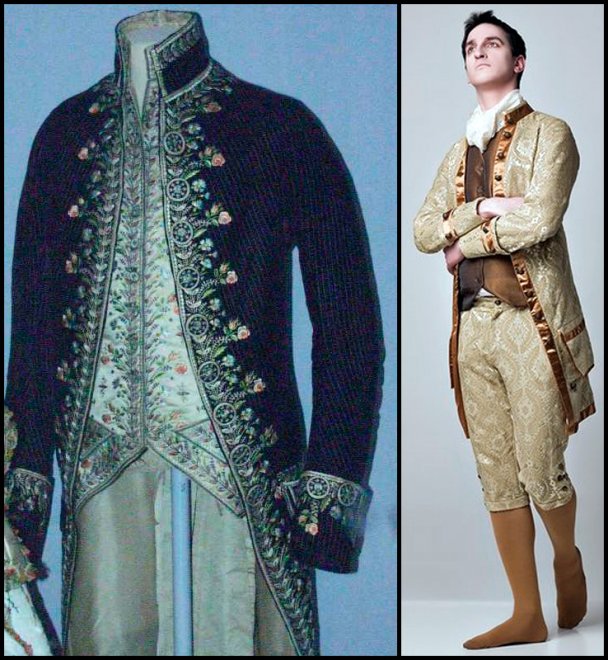
However, hairstyles, unlike Baroque, become simpler and flatter. The hair is curled into curls that frame the face, and later gathered into braids. Powdered wigs with curls on the sides, as well as a pigtail and a bow at the back also remain in fashion. The headdress is a cocked hat.
Women still wear full skirts - panniers, which are held on by a frame, as well as corsets. At the beginning of the Rococo era, the skirt decreases slightly, but then expands again to its maximum possible extent. Hairstyles also initially become less voluminous - a sleek, small hairstyle with rows of flowing curls is in fashion. But then the hairstyles increase again, reaching complete absurdity - still lifes of flowers, ribbons, decorative hairpins and feathers, and even entire decorative boats with sails appear on the heads of the court ladies.

Huge skirts no longer even take a round, but an oval shape. The bodice of the dress extends down, below the waist, in the form of a triangle; it also has a fairly deep neckline. This contrast becomes especially noticeable in the dress - a large fluffy skirt and a small bodice that is not at all voluminous in comparison. The sleeves of the dress taper to the elbow, they are abundantly decorated with ribbons and cascades of lace.
Ribbons became a favorite decoration of the Rococo era. In addition to ribbons, flowers were also actively used, both natural and artificial. It was during the Rococo era that artificial flowers first began to be used to decorate an outfit; before that, they served only to decorate churches and were made in monasteries.
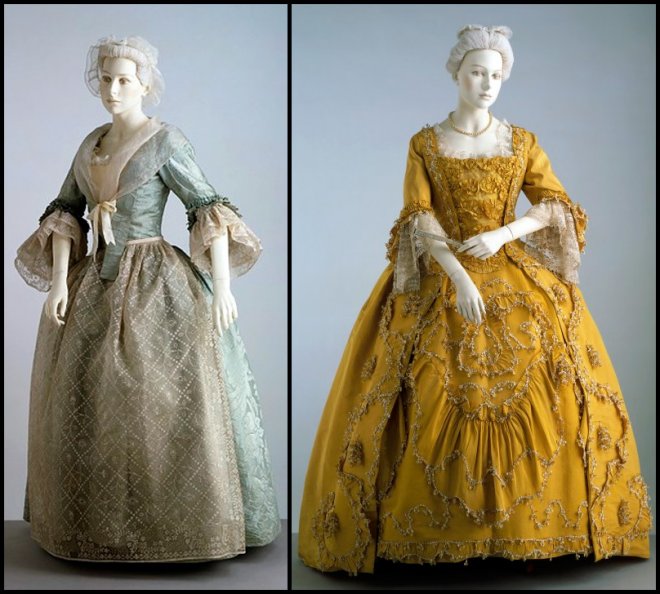
And among the fabrics, satin and satin are the most popular. These fabrics, soft to the touch, allow you to create many folds, which were so necessary in the Rococo era, plus the shiny satin was in perfect harmony with matte lace.
The outerwear in the Rococo era was a manteau - a loose cloak falling from the shoulders. Great importance attached and additional elements such as a muff, gloves, a fan with which ladies served special signs to your gentlemen. Flies - black silk patches of various shapes - also served as the secret language of lovers.
The Rococo style pays great attention to underwear, because in dresses that largely expose the body, which was typical for dresses of the Rococo era, underwear appears on public display. Women, like men, begin to wear stockings, like men - white, but sometimes colorful. Underwear is made of silk and richly decorated with embroidery, lace trim, gold and silver. After all, the neckline now allows you to see the undershirt, and the underskirt becomes visible when walking. Now the lower skirt is decorated, like the upper one, with lace, flounces, and ribbons.
The shoes are worn soft and low, they were made from enough simple material, but were often richly decorated - ribbons, embroidery, buckles, precious stones.
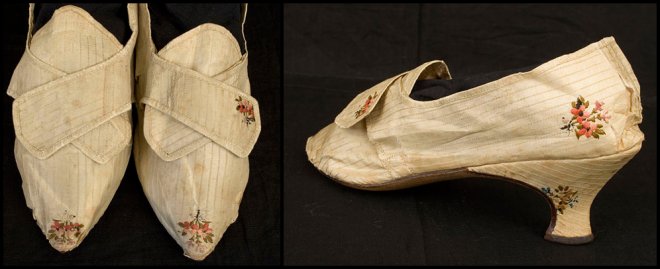
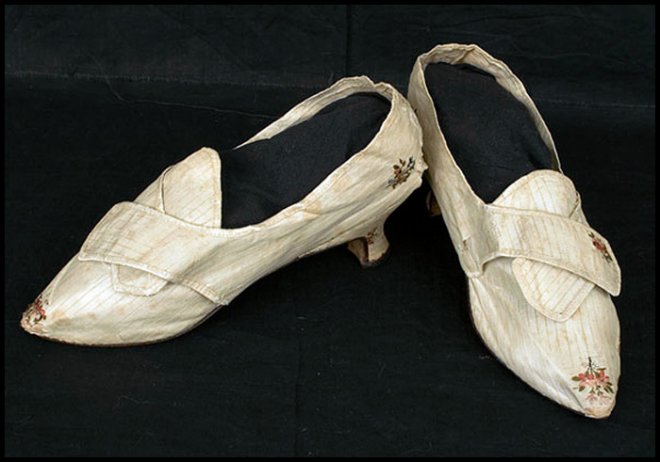
Ideal female beauty were considered to have a wasp waist, narrow hips, fragile shoulders and round face. – a fragile and slender simper. Ideal man- court dandy.
The fashion of the Rococo era in all its splendor can be seen in the paintings of artists of that era - Watteau, Boucher, Chardin, Fragonard.
(from the French rocaille - a decorative motif in the shape of a shell, the term "rococo" comes from the French "rocaille rock", translated as "rock", which reflects the essence of the new style - interweaving, a heap of fancy patterns of flowers, leaves, figures of women, angels). The Rococo style was distinguished by its bizarre asymmetry and elegance of forms. Its heyday occurred during the reign of the French king Louis XV. This is the time when the aristocracy withdraws into its cozy little world, spending its life in countless celebrations, balls, masquerades, hunts, picnics and love affairs.
The style of that era bore features of fragility and sophistication, mannerism and sensuality. The focus is on inner world and human experiences. This left an imprint on the character of the costume.
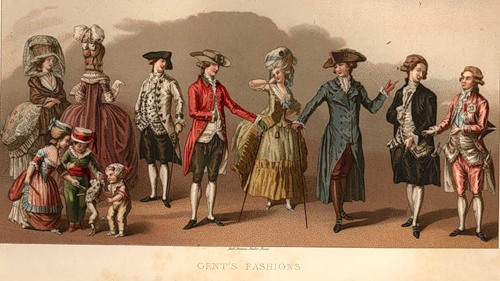
Women dominated the secular salons. The desire to please prevailed over everything and brought to life clothes that emphasized the sensual shape of the body. Everyone, absolutely everyone, wanted to be young (forever young): to hide their age, their hair was covered with a layer of powder to hide gray hair, and their cheeks were heavily flushed.
Movements and gait were developed with teachers of “good manners”, even while sitting at the table, their feet were inserted into special pads, accustoming them to the “third position”. “Good form” was the last barrier with which the aristocracy tried to disassociate itself from the growing bourgeoisie. No wonder the 18th century. called the “gallant age”, the age of powder, lace, minuet, the age of the feminine man.

Aristocratic costumes sparkled with gold and precious stones. Formal wear, work wear, salon wear and even were at home equally magnificent. They even wore jewelry instead of buttons. And Count d'Artois, the future King Charles X, used small watches in precious frames as buttons. Ceremonial dresses, even the most expensive ones, were worn only once.
The voluminous forms of Baroque clothing are a thing of the past; the dress seems to have acquired human dimensions again. Pomp and solemnity gave way to caprice and whim, asymmetry defeated harmony. The freely flowing Baroque dresses seemed to have fallen and acquired more certain forms, the costume details have become smaller and more refined. There were no noticeable changes in the cut of clothing.
Soft tones predominated in clothes, and plant patterns looked especially naturalistic. This is the time when court wits become more sophisticated in their frivolity: fashionable fabrics of soft green and soft yellow colors receive almost indecent playful names - “stained with manure”, “like the Dauphine” (the Dauphin is the heir to the throne), etc.
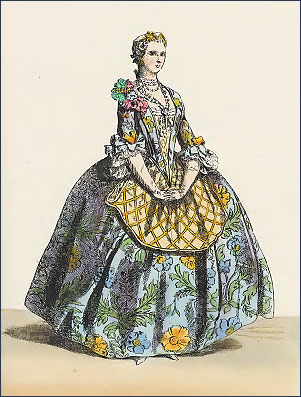
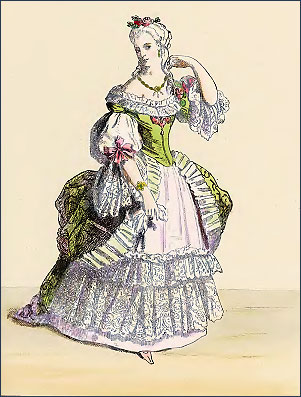
Gracefulness and lightness distinguish the silhouette women's suit of that time: narrow shoulders, extremely thin waist, high raised chest, rounded hip line.

Dresses with iron hoops are again in fashion, skirts have become wider and have acquired a dome shape. In the second half of the century, the skirt widens greatly to the sides, its round shape turns into an oval (stretched at the sides and flattened at the front and back). The sides of the skirt were so elongated that the gentleman could not walk next to the lady, but walked somewhat ahead, leading her by the hand.
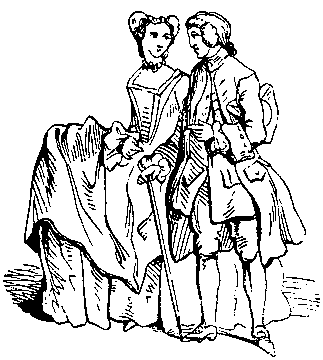
Sometimes small frames were simply strengthened around the waist - fags
, elongated at the sides and flattened in front and behind.
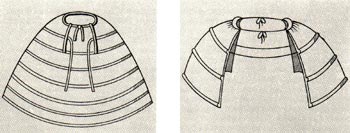

The waist is tightened with a corset, strongly raising the chest, slightly open with a shallow wide neckline in the shape of a square. The neckline around the neck and chest is draped with a flirty scarf (often with fringe).
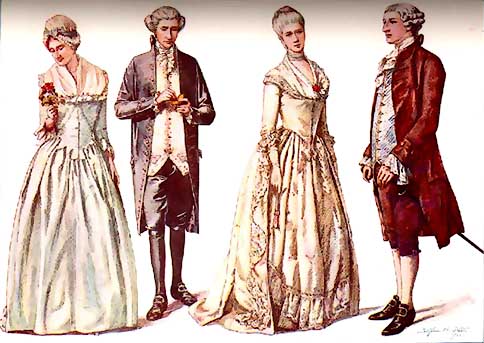
Later it is raised up to the chin, skillfully creating the appearance of high breasts, fashionable at that time. This fashion was introduced by the wife of Louis XVI, Queen Marie Antoinette, who had an impeccably beautiful small but high bust. The sleeves, narrow at the elbows, like a neckline, are decorated with a cascade of flowing lace, ribbons and braids. In the new women's outfit, everything is built on the contrast of an extremely small bodice and an incredibly huge, especially in its lower part, skirt.

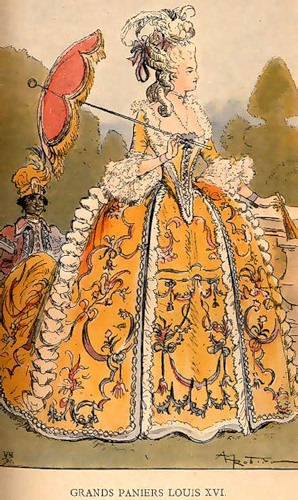
This original costume ended with a lovely female head with a smooth hairstyle significantly reduced in size. But already in the second half of the 18th century. the hairstyle “grows” upward again, sometimes to a height of up to 60 centimeters. Moreover, this happens almost in proportion to how the skirt widens more and more on the hips. Famous hairdressers (the legendary Dage - personal coiffer of the Marquise de Pompadour - the all-powerful favorite of Louis XV, the brilliant Leonard Bolyar - the court hairdresser of Marie Antoinette) together with milliners create still lifes of flowers, ribbons, decorative hairpins and feathers on the heads of their high-born clients; turban-shaped caps decorated with a crescent; even whole ships with sails raised; windmills, bridges and much more, right down to garden architecture. Sometimes there was a mass of jewelry on the head that exceeded the weight of the head itself.
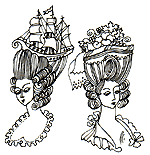
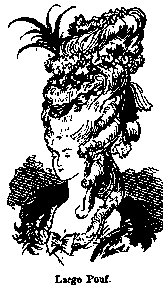

Pretentious hairstyles, supposedly giving their owners a sophisticated look, were certainly combined with special makeup (blush and whitewash). They made up so much that sometimes husbands did not recognize their wives.
Among the tailors, real masters of their craft appeared, for example, the then widely known milliner Rose Bertin, who served Queen Marie Antoinette herself. Arrogant and complacent, but certainly talented, Bertin was so popular among the Parisian elite that she was awarded the unofficial title of “Minister of Fashion.”
At the end of the 70s. English fashion is widespread in France, art style classicism. Mixed, transitional, eclectic forms are created in women's and men's suits. An example of such an “anglicized” women's dress, which has preserved the pomp and decorativeness of Rococo, is polonaise
.

It consisted of a tight-fitting lower dress (bodice and skirt) and a one-piece swing upper dress. They wore it on their hoops and polysone
(polyson is a small cotton or hair pad tied at the back to the bottom of the corset to create a curved profile silhouette). The bodice of the underdress fit tightly around the chest and waist, and was fastened with buttons or laced. The deep and wide neckline was trimmed with lace or ruffled frill. The skirt of the underdress was most often short (to the bones) and decorated at the bottom wide frill with ruffle. The bodice of the outer dress was also tight-fitting, low-cut, and diverged from the chest line, where it was fastened with a large bow. Its edges were trimmed with lush ruffles. The back and sides of the outer dress were draped on polyson with the help of laces, ribbon ties, and pins with bows.
The English sense of proportion and elegance still prevails over the established traditions of Rococo, and more modest, strict and simple shapes. That's what they call them "Anglaise"
in contrast to the close Rococo "francaise"
. First of all, these shapes part with the panier and create a curved profile silhouette using polyson. An anglaise dress consists of a fitted bodice and a straight, gathered skirt.
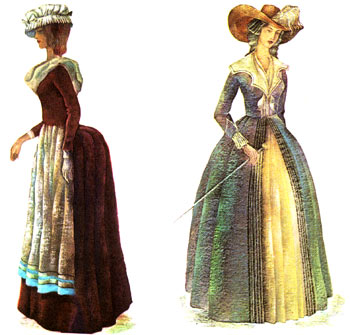
The neckline is most often covered with a chest scarf. Narrow long or 3/4 sleeves with a small cuff. An apron made of thin fabric, decorated with a frill, is worn with the dress. A more elegant option is a double dress, where the top one is fastened on the chest, leaving all open in front of the underdress. However, the lush decorative and voluminous ornamentation of Rococo is absent; the color and color combinations change.
The women's "Anglaise" suit is characterized by convenience, practicality, a variety of top assortment shapes and a certain imitation of men's clothing in cut, shape of parts, and finishing.
As outerwear in the 70s, elegant English long ones came into fashion redingotes close-fitting silhouette, something between a frock coat and a coat, shortened Cossacks, Karakos, tailcoats .
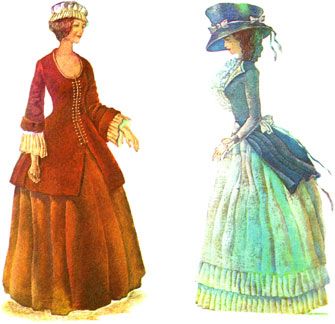
Women wore redingotes over full-skirted dresses. The jacket was buttoned up to the waist, and then parted below, leaving it open. most skirts. Bright fabrics, mostly striped, were used to sew the redingote.
Men's fashion of the first half of the 18th century. just as whimsical, luxurious, decorative and feminine. A man becomes more like a woman than ever: he is powdered and perfumed; he prefers not to wear a sword - the last sign of masculinity; his teeth are not only clean, but also whitened; the face is rouged; fingers in rings, and pockets in trinkets.
The tails of the camisole take the shape of a skirt; pants become narrow and must be complemented by white stockings; the vest's sleeves disappear; The costume makes abundant use of all kinds of ribbons, lace, buttons and even flounces. The hairstyle changes most radically: the curl practically disappears, it almost comes down to a Prussian braid, tied with a black ribbon.
In the 18th century There is a wide variety of forms of outerwear. These are primarily redingotes of an adjacent silhouette with a single-breasted or double-breasted fastener.
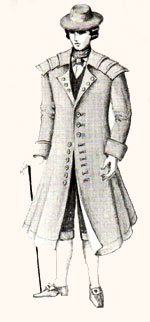
Wear also warm and comfortable frock coats
, trimmed with fur, often lined with fur. Much less often they turn to the cape.
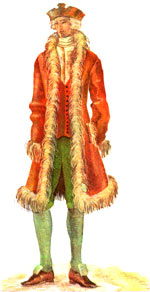
Only in the second half of the 18th century. the men's suit begins to become truly male appearance, freeing oneself from feminine details. Eventually it will turn into a tailcoat.

But this will only happen in the 19th century. In the meantime, it is still sewn from light pastel colors of satin and satin, fabrics that are soft to the touch and pleasant to the skin of the body.
Main type of finishing men's suit there were laces and buttons. Lace was used for puffy frills and white ties. Precious sculpted, chased, enamel buttons decorated tailcoats and culottes. The costume was also decorated with keychains attached on braided cords or chains to the culotte belt.
Hats are small hats with brims that are narrow at the front and curved at the sides. The wigs were curled at the side and placed in a pigtail with a bow at the back.
As for color, court etiquette was strict in this matter. For example, only older noble women had the right to wear red. It was necessary to present oneself to the court only in black dresses trimmed with white lace, etc.
Such types of clothing as coat
- a loose cloak that flows smoothly, without folds, from the shoulders.
It is interesting that under the influence literary heroes came into fashion different kinds clothes. Thus, thanks to the hero of Goethe’s novel “Suffering young Werther“A suit of blue cloth caftan with metal buttons and yellow leather pants, which were used for morning walks and horse riding, became fashionable.
Great importance is attached to small additions - accessories. These include a fan, a pompadour bag for cosmetic items, gloves and a muff (large for men and small for women).
At this time, people were still very fond of ribbons that decorated clothes from top to bottom. Very common decorations were bouquets of artificial flowers attached to the chest, a watch-fob on a chain, and ruffles made of lace. In France, there is even an extensive production of artificial flowers as the newest addition to the suit. There was a fashion for thin canes with a tassel, including bamboo ones. And since in the 30s of the 18th century. snuff came into fashion and began to be used snuff boxes and tobacco grinders
. Became very popular in the 80s lorgnette
The costume was complemented by light silk stockings with embroidery and shoes with high curved heels. The shoes look especially flirty - small and elegant, like the whole suit in general, with a deep neckline and a large heel of an elaborately curved shape. The shoe does not have a heel, which gives the impression of a small foot. Usually shoes were made of silk, some were decorated with embroidery, ribbons, buckles and even precious stones. For men, black shoes were considered dress shoes, brown ones were intended for walking; red and white were the privilege of noble ladies.
In rococo style clothes, very much exposing the body, great attention was given to women's underwear - an underskirt with a swing blouse - negligee
(from the French neglige - careless). Silk, richly decorated with gold and silver, embroidery and lace, it becomes a source of pride for ladies. The neckline was made deeper, revealing the undershirt and almost the entire bust. In women's clothing, the element of eroticism and sexuality is becoming more and more apparent.

The morning that began late - it was called in secular parlance “the youth of the day” - was greeted by pampered, sophisticated ladies exclusively in negligee. The deliberate carelessness and intimacy of the negligee penetrates into an everyday suit, adding a special charm and mood. They begin to appear in negligee on walks, citing “a bad mood or feeling unwell».
Towards the end of the century, a very sexy soubrette (maid) costume was very popular in household use - an elegant cap, a short outer skirt that coquettishly revealed the lower one, and an elegant apron.
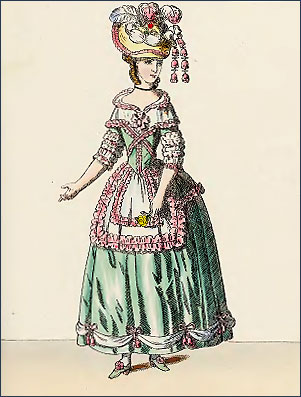
Rococo fashion was adopted by all levels of society. She unusually quickly won many European countries. This was greatly facilitated by fashion magazines - “Fashion Gallery” and others, fashion calendars containing 12 fashion pictures by month and the addresses of Parisian tailors, seamstresses, hairdressers and perfumers, and, of course, the “Pandoras”, popular in Russia, which continued to travel. European capitals. Every month they departed on routes “from London to St. Petersburg.”
In the Baroque era, costumes were simply magnificent. But this period was replaced by the Rococo era. Costumes have become, so to speak, more “intimate.” And in this, the championship belonged to the same French court. Almost everything has changed. Everyone knows the famous Versailles gallery of mirrors. But such structures are no longer created. They are being replaced by the intimate salons of nobles. The orchestras that existed during the Baroque period are being replaced by intimate chamber music. The same thing happens with fashion. The voluminous clothes of the Baroque era are being replaced by significantly reduced decorative dresses, decorated with rich ornaments. The dress seems to take on human dimensions.
If during the Baroque period clothing was distinguished by solemnity and pomp, then in the Rococo era it was more likely to be distinguished by whimsy and capriciousness. The traditions of moderation were forgotten. The correctness of the lines was completely defeated by asymmetry. Dresses, which fluttered freely in Baroque times, took on more defined forms, as if they had fallen away. The details of the costume have become much more refined and smaller.
But there were no significant changes in the cut of clothing. Rococo adopted all the fashion trends that appeared in the previous era. But they were enriched with new content.
During this period, there was significantly less luxury and external splendor. But the dress began to be distinguished by its lightness and grace. The French began to wear hoop dresses again. Their domed shape was somewhat reminiscent of the architecture of churches. Skirts are becoming much wider.
The basis of any skirt was iron rods. They were covered with linen. In the second half of the century, the skirt widens significantly. From round it turns into oval. A deep neckline appears on the bodice. It is in the form of a triangle and falls below the waist. The sleeves become very narrow at the elbows. Just like the neckline, they are decorated with waves of ribbons, lace and braids. In this costume, a huge skirt and a very small bodice provide contrast. And above all this bizarre structure is a head, which has been reduced in size due to the adjacent hairstyle.
It is generally accepted that the clothing of those times was characterized by anarchy. But contemporaries were delighted with the Rococo dress. This was considered to be an example of the art of "de se devetir" (from the French de se devetir - to dress). New clothes very often associated with voluptuousness or innocent coquetry. This is best evidenced by the changed women's bodice.
In former times, the figure acquired geometric shape through the use of plate corsage and rifrock. Now the figure is becoming very diverse. The greatest diversity appears in the second half of the 18th century. If at the beginning of Rococo the hairstyle was significantly reduced, now it is becoming taller again. With it, the skirt becomes significantly wider.
Hairstyles and facial makeup changed significantly at that time. Both milliners and the most famous hairdressers do this. What doesn’t appear on the ladies’ heads! These include still lifes of feathers, decorative pins of ribbons and flowers, and turban-shaped caps decorated with a crescent. It got to the point that windmills, boats with sails, garden architecture and bridges appeared on the lady’s head.
White powdered wigs appeared. They hid their age very well. Their owners had a very elaborate and sophisticated appearance. This was also emphasized by the facial makeup. A lot of makeup was applied to the face. There were cases when a husband did not recognize his wife, who had applied makeup to her face. At the same time, the wife had no idea of camouflaging herself in any way.
Previously, fashion creators were simply called tailors. Now they become complacent and arrogant. The fashion of the Rococo era expresses the trends of its time much more expressively than the fashion of past years.
How general form the dress and its decoration were well adapted to the style of the time, which was characterized by a penchant for decoration. Using fabrics, they were then able to “connect” man and nature. Nature could enter the palaces only through the windows of the salons. But her reflection appeared in the materials and, most of all, in the hairstyles. Fountains, trees, flowers and very often even architectural garden structures were often reproduced on hairstyles.
In the first half of the 18th century, men's fashion tried to keep up with women's fashion. The figure becomes whimsical, decorative and luxurious. We can say that to some extent she is becoming effeminate. IN men's fashion has its own “skirt with hoops” made from the tails of a camisole. A men's suit is decorated with the same ribbons, buttons, flounces and lace. The vest became sleeveless and shrunk somewhat. The pants are knee-length and very narrow. From below they are complemented by white stockings.
But the main change in men's fashion was the change in hairstyle. Gone are the days of baroque curled hair. Hairstyles are becoming much simpler, flatter and significantly smaller in size. In those days, hair was curled into curls that framed the face. Later, the hair began to be pulled together and braided into very characteristic braids.
The competition between men's and women's fashion ended in the second half of the 18th century. The men's suit begins to acquire its own style, independent of women's fashion. The camisole is greatly simplified. There are no more ribbons, no lace, no flounces on it. Later, the camisole turns into a tailcoat, which becomes the main men's clothing in the 19th century.
Almost all decorations from men's clothing disappeared after 1778. But a man’s dress is also made from fabrics of very delicate colors, the same ones that women’s dresses were made from.
At that time, the most popular were satin and satin, which were very soft to the touch. From them it was possible to create a very rich play of folds, and this was mandatory in clothes of the Rococo era. Shiny satin went perfectly with matte lace. The entire outfit was done in soft, light pastel colors who replaced bright colors previous era.
New types of clothing also appeared, which also became part of court fashion. The main type is manto. This can be defined as a fairly loose coat that flows smoothly from the shoulders. But still, such a cloak had a shape. The shape was determined by the cut of the undergarment with a crinoline and a fitted bodice.
Small additions to clothing also meant a lot. This is a pompadour-style handbag for various little things, a fan, without which in those days it was simply impossible to flirt, a muff and gloves.
In those days, fashionistas were very fond of ribbons. They decorated all clothes from top to bottom. Flowers, both natural and artificial, were very fashionable. In earlier times, artificial flowers were mainly made in monasteries. They were used to decorate temples. But at that time, the production of artificial flowers appeared in France. And they were already used as a fashionable addition to clothing.
Now a few words about shoes. Small and very elegant shoes with an increased heel and a deep neckline were in fashion. But everyday people mostly wore low and soft shoes, somewhat reminiscent of house slippers.
Mostly shoes were made of simple material or silk. But some shoes were decorated with ribbons, rich embroidery, buckles and sometimes precious stones.
Rococo clothing exposed much of the body. Therefore, the closest attention is paid to underwear. Women, like men, begin to wear white stockings. But sometimes colorful stockings are also used. In those days, underwear truly became a work of art. It is made of silk, trimmed with lace, rich embroidery, silver and gold.
A rather large neckline made it possible to see a shirt trimmed with lace. If before the underskirt only strengthened and complemented the overskirt, then later it began to play very important role. After all, she could be seen. That is why they began to decorate it with flounces, lace and ribbons.
A variety of silk black patches and flies become important integral part makeup. They were placed based on the language of love. They were placed both on the face and on those parts of the body that were hidden from human eyes.
The fashion of the Rococo era can be defined as typical of the aristocracy. This fashion finally united all royal and aristocratic Europe. All European countries followed it and blindly imitated it.
The fashion that was reflected in the paintings of Fragon, Chardin, Boucher and Watteau appealed to all segments of the population. Simple people and the townspeople were able to adapt it to their capabilities. This fashion spread very quickly due to the fact that the first fashion magazines began to appear in European countries.
When creating new images, designers often turn to the past. Thanks to this, styles that appeared decades, and sometimes centuries ago, get a chance for a rebirth. This is exactly what happened with the well-known Rococo style. In clothing, he manifested himself in the special sophistication of his outfits and their incredible pomp.
Rococo style: origin and flourishing
From French, “rococo” is translated as “decorative shell” or “crushed stone”. The Rococo style originated in the 18th century. and was a continuation of the Baroque. It first appeared in France. The main differences of this style were the desire for sophistication and the conscious distortion of natural outlines human body. The first legislator of Rococo was Louis XIV, and a few decades later - Marie Antaunette.
Modern couturiers are well acquainted with rococo dress models and often use them in their collections. It is worth highlighting such models as:
- "inverted glass"(the top is tied into a corset, and the bottom is a wide fluffy skirt worn over the frame);
- "Watteau dress"(wide one piece dress, falling in beautiful folds onto the frame, which is distinguished by the original design of the back);
- "polonaise"(an outfit characterized by an abundance of folds, ruffles, frills, artificial flowers, etc.);
- shirt dress(an outfit in which the waistline is emphasized with a sash, the chest is covered with a scarf, folded, and the massive skirt is moved back).
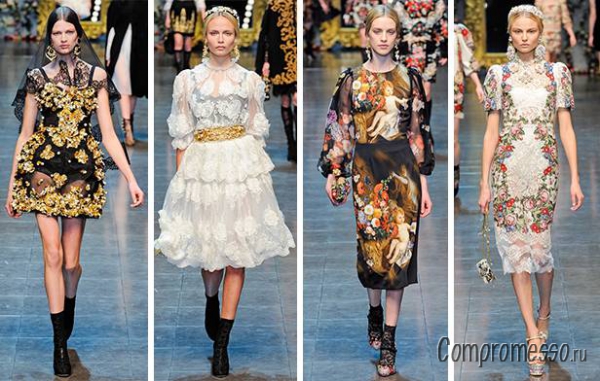
Various accessories were a mandatory addition to a rococo style outfit. In particular, a fan, a muff, a pouch, an umbrella, a dark velvet hat with feathers, and a straw hat decorated with flowers. Classic look Rococo is a woman dressed in a dress with a heavily low-cut bodice and a full crinoline skirt. Such outfits were made from cambric, taffeta or silk, and decorated with frills, embroidery, bows, and flowers.
Rococo style in modern clothing
IN modern world it is difficult to find Rococo in pure form. Unless it will be a carnival outfit. But many details of this style are still relevant today. For example, Ralph Lauren often uses the rocaille pattern in his collections. Shoes with a buckle and wide heels were borrowed from Rococo. At one time they were worn by Louis XIV himself, and now they are actively promoted by Marc Jacobs.
The “inverted glass” silhouette remains popular. Most often it is used when creating wedding dresses. For such outfits it is typical fluffy skirt, a tight corset and a heavily low-cut bodice. The sleeves of this dress are decorated with flounces, and the length can reach up to the elbow. Although their presence is far from necessary. A wedding dress in the Rococo style often features a lot of lace and artificial flowers. Note that this silhouette will save those with plump hips and thin legs.
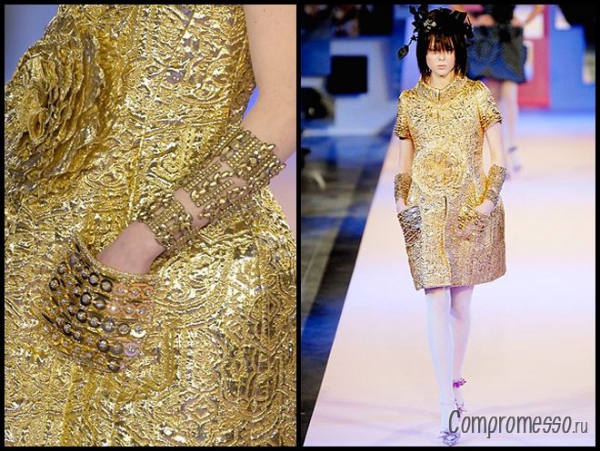
As for accessories, headbands with crystals, massive necklaces and long heavy earrings can be considered a symbol of Rococo. Traditional flowers The styles described are considered soft blue, pale green, pink and pale yellow. If you want to create modern look in the Rococo style, then be sure to check out the collections of John Galliano and Vivienne Westwood. In addition, this style can be seen in the outfits of the inimitable Lady Gaga.
How popular is the rococo style in clothing in 2013?
Already now we can safely say that this is the trend of the present and future seasons. Proof of this was the Mercedes-Benz Fashion Week held in New York. The most anticipated was the Oscar de la Renta collection, created in collaboration with John Galliano. Models from this collection were distinguished by textured shiny embroideries in the Rococo style.




